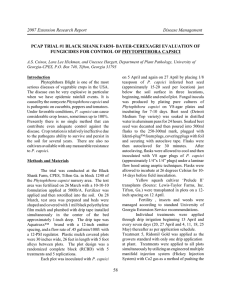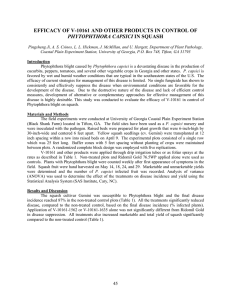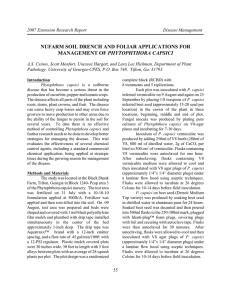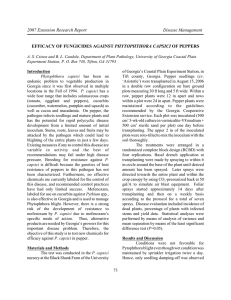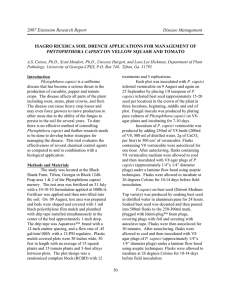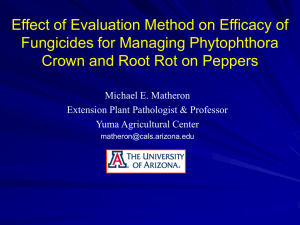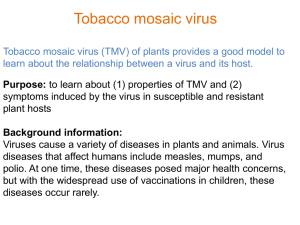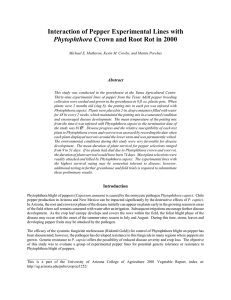CS-23.3 PLANT VIRUS INFECTION OF PHYTOPHTHORA: A
advertisement
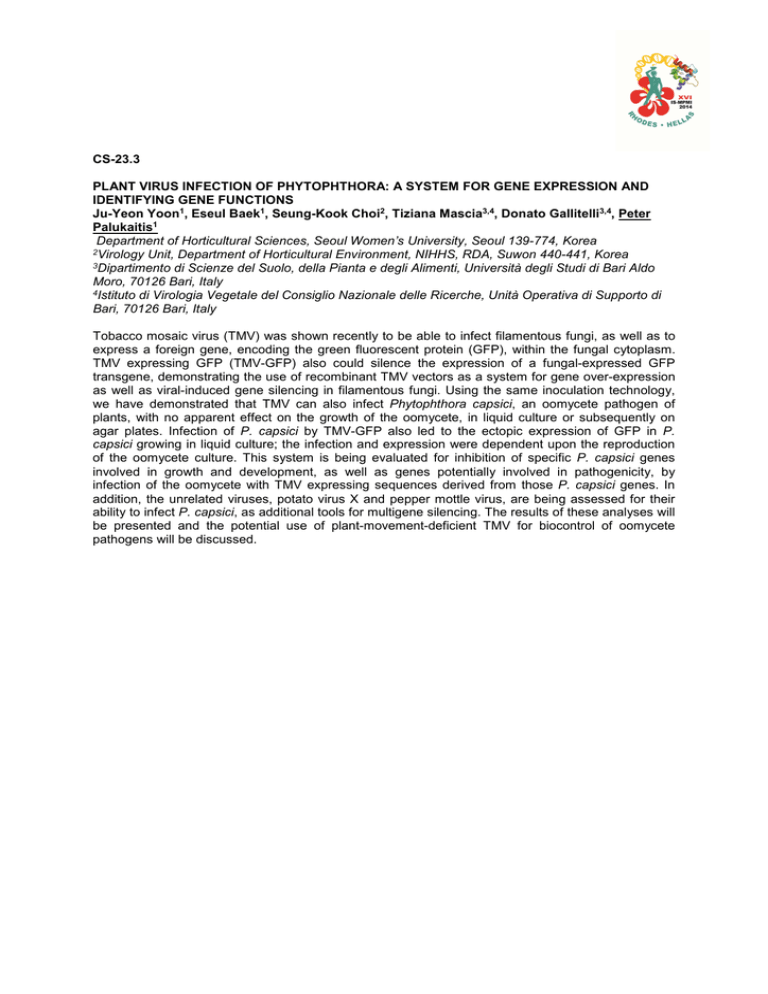
CS-23.3 PLANT VIRUS INFECTION OF PHYTOPHTHORA: A SYSTEM FOR GENE EXPRESSION AND IDENTIFYING GENE FUNCTIONS Ju-Yeon Yoon1, Eseul Baek1, Seung-Kook Choi2, Tiziana Mascia3,4, Donato Gallitelli3,4, Peter Palukaitis1 Department of Horticultural Sciences, Seoul Women’s University, Seoul 139-774, Korea 2Virology Unit, Department of Horticultural Environment, NIHHS, RDA, Suwon 440-441, Korea 3Dipartimento di Scienze del Suolo, della Pianta e degli Alimenti, Università degli Studi di Bari Aldo Moro, 70126 Bari, Italy 4Istituto di Virologia Vegetale del Consiglio Nazionale delle Ricerche, Unità Operativa di Supporto di Bari, 70126 Bari, Italy Tobacco mosaic virus (TMV) was shown recently to be able to infect filamentous fungi, as well as to express a foreign gene, encoding the green fluorescent protein (GFP), within the fungal cytoplasm. TMV expressing GFP (TMV-GFP) also could silence the expression of a fungal-expressed GFP transgene, demonstrating the use of recombinant TMV vectors as a system for gene over-expression as well as viral-induced gene silencing in filamentous fungi. Using the same inoculation technology, we have demonstrated that TMV can also infect Phytophthora capsici, an oomycete pathogen of plants, with no apparent effect on the growth of the oomycete, in liquid culture or subsequently on agar plates. Infection of P. capsici by TMV-GFP also led to the ectopic expression of GFP in P. capsici growing in liquid culture; the infection and expression were dependent upon the reproduction of the oomycete culture. This system is being evaluated for inhibition of specific P. capsici genes involved in growth and development, as well as genes potentially involved in pathogenicity, by infection of the oomycete with TMV expressing sequences derived from those P. capsici genes. In addition, the unrelated viruses, potato virus X and pepper mottle virus, are being assessed for their ability to infect P. capsici, as additional tools for multigene silencing. The results of these analyses will be presented and the potential use of plant-movement-deficient TMV for biocontrol of oomycete pathogens will be discussed.
